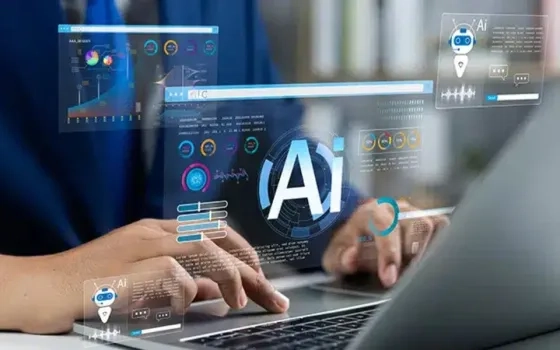Over the years analytics has created an important space for itself in the retail industry where it helps to bridge the gap between what retailers have to offer and what the customers want. E-commerce, having had the benefit of tracking cookies and web analytics tools, calibrated every aspect of the online shopping experience but on the other side, brick and mortar retail had not been as fortunate. However, this has not prevented physical retail from thriving, with in-store analytics expected to reach $3.3 billion by 2024 at 21.6% CAGR.
Challenges For In-store Retailers
Ever-evolving Customer Expectations
Customer preferences will keep changing, sometimes even faster than anyone’s imagination. This inevitable truth has made it difficult for in-store retailers to keep up with ever-changing customer expectations.
Absence of personalization and contextualization
Not only personalization and contextualization are the keys to connect with today’s customers, but they also impact the purchasing decision. The absence of a 360° view of customers has limited the capabilities of the physical retailer to provide a more personalized experience, thus, losing even loyal customers from time to time.
Tracking the customer journey
A customer journey, from the moment they enter the store till they exit, is vital, and analyzing this aspect helps understand the customer behavior and moreover, creates more opportunities for monetization. Unlike its online counterpart, in-store retailers do not have the access to such mechanisms that track the customer journey inside the store.
Absence of a Co-relation Platform
Although data collection and analysis has slowly become an integral part of physical retailers’ strategic and decision-making processes, there are multiple systems in the ecosystem that are working in silos. What still is missing is the right platform that co-relates and optimizes multiple data sources to capture meaningful customer insights inside the store, thus, increasing digital competencies and in-store capabilities of the retailer.
Above all, the major concern for brick and mortar has always been the return on investment an analytics solution will provide. In other words, will it help the business earn more revenue and grow with time?
Current Trends In The Retail Market
Changing investment scenarios towards In-store retail technologies
Although the business world witnessed a declined funding to maturing e-commerce companies and related technologies in 2019, it saw significant growth for In-store retail technology that drives physical retail productivity, improve supply chain efficiency, and uses tech to make retail more personalized
We also saw a surge in investment in artificial intelligence (AI) companies working across physical retail technology functions
Increasing trend of replicating the eCommerce analytics model into In-store retail
By tracking a customer’s in-store movement, retailers are trying to develop a 360° customer profile and deliver targeted information and discounts depending on which products the customer is pursuing, thus enriching customer experience in-store
Faster Growth for Small & Medium-Sized Enterprises (SME) analytics market
The SME for analytics is expected to witness the highest CAGR of 23.4% during (2018 – 2024) where In-store existing technologies like AI-based video solutions and sensors analytics are being remolded to explore new use cases such as offering non-security-related insights for businesses
Focus on building an in-house analytics team
There has been a growing trend of global retail brands acquiring retail analytics companies to serve consumers more personally at scale and strengthen their customer base
Analytics Provides More Than Just Insights
Real-time customer engagement
Retailers are acknowledging the call for more effective personalization, and analytics is the preferred way to fulfill the need for a solution that is geared towards enhancing the customer experience. With a goal to drive conversion rates or to raise awareness about a product that generates customer interest, personalization efforts are designed and executed to influence individual consumers’ purchasing habits. What adds the cherry on top is the right moment of engagement. Consider the below scenario:
Adam, being a loyalty customer, while entering a store is automatically recognized by the system. Meanwhile, his purchase history, dwell time, shopping preferences, and propensity for the next purchase category is analyzed. His profile analysis revealed that Adam is likely to make a purchase during the festive season. He is then sent a personalized offer stating “Hey Adam, how about an ethnic wear for the upcoming festive season? Check out the display on the Men’s section and grab 25% off at the counter”.
Such an insightful system not only identifies Adam as a shopper who majorly picks up his attire and accessories more during a festive season but also encourages him to do an impulse buy. Such real-time customer engagement is a win-win for both the entities, the retailer, and the shopper.
Business Cost Optimization
Optimizing in-store operations through analytics serves each stakeholder:
For Store Manager,
- It increases the chances of in-store conversion by optimizing staff operation in accordance with the number of visitors and their needs within stores during operational hours
- It helps provide store design insights so that instead of testing different floor plans, the analytics points in a precise direction
- It provides effective product placement to influences both shopper experience and sales since the shelf is where a customer makes their buying decision
For customers,
- It improves the overall experience of shopping when inside the store
- The more personalized a customer’s experience is, the greater their satisfaction will be. By assessing the shopper’s previous in-store behavior, you can tailor their future experiences
And lastly, for the business,
- It optimizes marketing messages; by leveraging the available shopper insight, it is all about communicating the right messages in an effective way after that
Long term Readiness
Retail stores that understand the trends of store walk-ins and walkouts, always stand a higher chance of improving their customer service, in turn, boost business revenues, and increase profit margins. While footfall analysis lets retailers know the percentage of customers walk into the store, conversion rate analysis lets retailers understand the actual reason for an increase or drop-in conversion rate at different times and take necessary measures in the long term to sustain higher conversion rates. Here is another scenario:
Supermarket X, after having deployed an analytics solution, realizes that the number of customers visiting the premises tends to increase towards the end of the week, at the beginning of each month, and at the end of the year. From this insight business executives can make key decisions such as having mid-week and mid-year promotions to increase sales and customer footfall between those periods. Other decisions may include increasing the inventory of goods most frequently bought at that point in time.
With the increase of Big Data, Machine Learning, and AI, it is expected to have major transformational effects for the offline retail space, especially in terms of personalization and the in-store experience. Retailers around the world look to enhance the customer’s in-store experience through advanced computer vision since a happy and satisfied customer will eventually be a loyal customer.
There are powerful monetization platforms available in the market for Brick and Mortar retailers, that collect & co-relate data from multiple sources to create monetization opportunities by assisting them in the following manner:
- Understand the customers and their shopping behavior
- Improve the overall shopper experience while in-store
- With contextual location-aware engagements with the in-store customers
References
- https://medium.com/inteli-insights/predicting-customer-footfall-in-retail-stores-106e12b8e134
- https://www.kbvresearch.com/in-store-analytics-market/
- https://www.technavio.com/report/in-store-analytics-market-industry-analysis?tnplus
- https://eyeware.tech/blog/how-to-use-retail-analytics/
- https://retailtouchpoints.com/resources/retailers-seek-innovation-in-personalization
(This blog was originally published here)
















